Chapter 9
Socialutions: What About Results?
Often we hear business leaders ask
about the value gained from all the social
computing tools and activities. Many look
at social web initiatives as marketing
tools while others consider it a means of
communicating with various
stakeholders.
Socialutions looks at advanced social
computing tools holistically as a means
that facilitates operational improvements
and breakthrough strategies across all
elements of any business.
Every business has a set of common challenges that impact performance that includes both “soft” and “hard” issues requiring constant monitoring, leadership and management methods to achieve improvements. These include:
1. Communication breakdowns
2. Cultural barriers to facilitating improvement 3. Increased demand to deliver higher value to customers 4. Customer and employee retention and acquisition 5. Lowering cost while increasing revenue
6. Satisfying private and public market expectations 7. Removing political barriers that inhibit progress 8. Leveraging technology to improve performance 9. Measuring and monitoring the vital few indicators of progress 10.Anticipating and planning for the future while managing the results of the day
The solutions to these top ten challenges have to do with improvement of methods, which need to translate into short and long-term results. Business results are a measure of dollars gained or lost as the result of related actions or lack of appropriate actions. Many of the solutions to the top ten challenges are “soft” in that it is more about methods than it is about measuring hard numbers and short-term results.
Historically, anything having to do with people, culture, communications and satisfaction has been labeled as “soft.” Managing financial results, regardless of actions or methods, has been considered “hard.” The fact is, counting or manipulating numbers is a lot easier than managing the “soft issues” that create the numbers.
The principals of these issues are true regardless of the size of a business, an institution or a global market. It is difficult for leaders, predominantly male leaders, to both admit and to effectively deal with the “soft issues,” because the fundamental elements of the appropriate solutions are essentially socially oriented. Solutions to the top ten challenges require the cooperation, collaboration, consensus and management of “people processes.” Most businesses today suffer from social division, internally and externally, between people, purpose and progress.
Is It an Issue of Ethics?
Devin Stewart, Director, Global Policy Innovations, Carnegie Council writes,
“From an ethics point of view, web 2.0 has the potential of dissolving the false divisions between people—whether it is between nations and communities, producers and consumers, or labor and capital. With more ownership—both in influence and voting power—of the global economy, these divisions can fall away. “
“In the case of CSR, companies should consider the principles of sincerity, innovation, and pluralism (as Mikkel Sorensen and Nicolai Peitersen have argued in “CSR 2.0”). Companies can draw on the infinite wisdom out there (in publics). They have this great list of principles for CSR 2.0:” 1. Inclusiveness – involving stakeholders directly from beginning to end 2. Market driven – no longer expert driven 3. Innovation – smart companies turn market pressure into stakeholder led innovation
4. Sincerity – you can no longer uphold an image that is not real 5. Co-ownership – a truly embedded value-based culture requires involvement
6. Dynamics – standards and annual audits replaced by 24/7 engagement 7. Quality - CSR as immersive business strategy 8. Personal - It’s about you, not your sector! What are your own ethics?
9. Pluralism – number and nature of CSR projects will expand dramatically 10. Proximity - local impact is global
“Megacommunities or multi-stakeholder initiatives become a reality with web 2.0, producing more sustainable solutions. Not only are the solutions drawing on more information but they also get more buy-in from increased participation. Web 2.0 has empowered civil society to do its job: producing social values and fostering the positive dynamic between companies and civil society.”

Social values and ethics are usually considered one of those “soft issues” by most business leaders rarely tied to producing hard results. Social value and ethics encompasses right conduct and good results.
Socialutions is about adopting a management method that ensures a business of worth to its stakeholders and a business that exceeds expected levels of satisfaction by people. The transparency of the web creates the accountability for business to produce real solutions for all stakeholders; spin is no longer sustainable as a solution. To obtain the traditional “measurable hard results, a business must ensure social solutions that address the “soft issues” which produces the real results.
Taking Your Company from Zero to Hero on the Social Web Many of today’s companies recognize the urgency of converting to a customer-centric, social web-based, operation. The excuses and faulty logic brought on by global prosperity have been replaced by an honest examination of internal operations and external market share. As the various departments search for collaborative ways to maintain profitability in uncertain economic times, we will see more and more arrive at the duh!
moment of realization that the customer comes first.
We have not exactly reached the Utopia that Adriana Lukas describes:
Imagine having your customers share with you what they like, want and think of you. . . Interaction with them is modular, intuitive and user-driven freeing much of your resources spent on marketing and transaction cost.
. . . nor have we seen more than a few examples of big, giant companies who give more than lip service to the process Doc Searls detailed almost five years ago (and Eve Maler recently simplified for those who love simple graphics).
However, there are some unpredicted catalysts on the horizon, and
in the spirit of making right decisions, we see that adoption of a
Socialutions paradigm is going mainstream.
Our proposal for Socialutions involves problem-solving and finding innovative solutions through social exchanges. Organizations can capitalize on the relationships and relationship connections of the people connected to them in some way, whether these connections come from employees, vendors, customers, or wherever. However, the customer must come first--not to the point of turning major strategic decisions over to crowd sourcing perhaps, but first nonetheless.
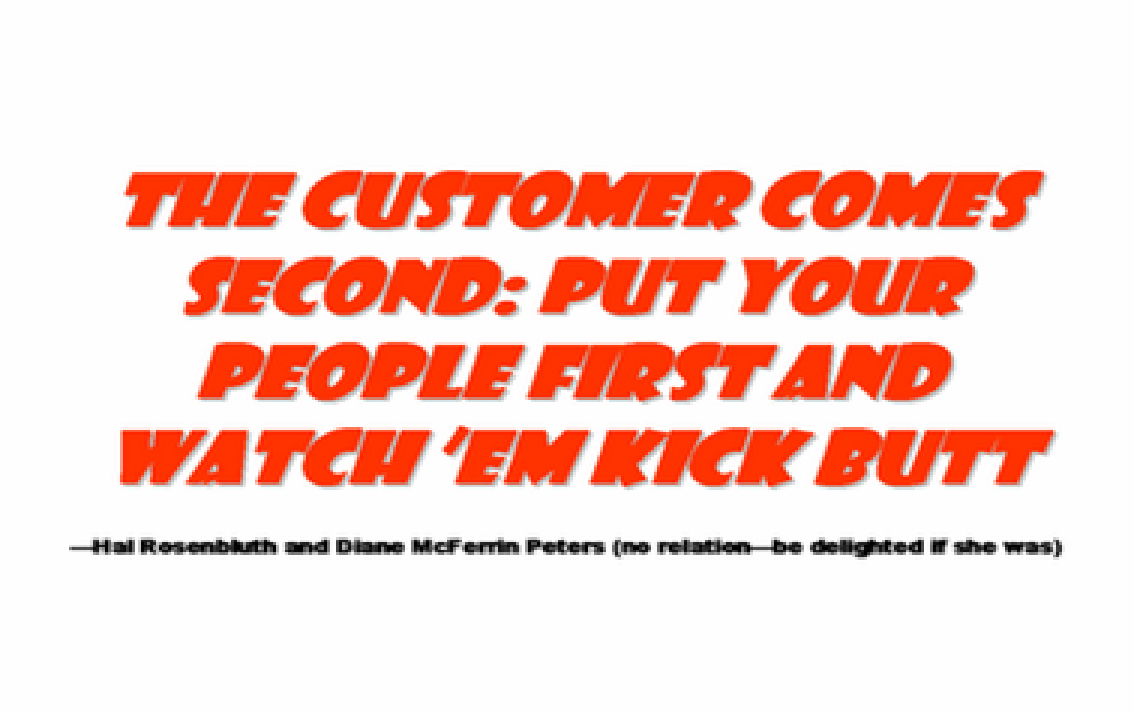
Tom Peters has a rather unique perspective on where to put the customer.
He states, “To put the marketplace customer first, I must put the person serving the customer “more first.”
He further states that
…”To give a high-impact,
well-regarded, occasionally
life-changing speech “to
customers” I first & second
& third have to focus all
my restless energy on
“satisfying” … myself. I
must be … physically &
emotionally & intellectually
agitated & excited &
desperate beyond measure … to communicate & connect & compel & grab by the collar & say my piece about a small number of things, often contentious and not “crowd-pleasers,” that, at the moment, are literally a matter of personal … life and death.
The drive of tomorrow’s successful organizations will be a new method and philosophy proclaiming, “We the Peoples are all aimed at Socialutions” that creates perpetual value. We the people are aimed in that direction, but do the companies who serve us (even if we are after their employees)?
Here are some Socialution suggestions for getting from where you are to where you need to be in a hurry:
1) Make the Cluetrain Manifesto (especially the 95 Theses) mandatory reading for all your employees
2) Have your company intranet feature a link to Cluetrain @ 10 (a revisiting and revising after ten years) and recent posts on the Clueship.
3) On your company-wide strategy wiki (get one if you do not have one), start a “top ten clues” list and allow anonymous voting.
4) Allow time off (5% of the workday would be a good start) for your people (all of them, not just sales and HR) to Twitter, blog, Facebook and MySpace for the company.
5) Run from traditional (old school) marketing as a source of “what works.” If it really worked, you would not have taken the time to read this.
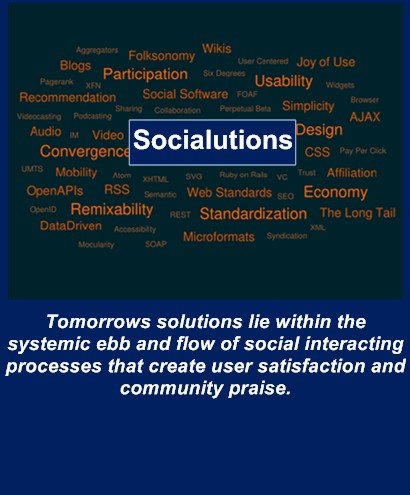
Who Has the Right Socialutions?
When you do a search for “Social Media Consultants” on Google, it produces close to six million page references. It is ironic that on the front page none of the big name consulting firms show up, rather they are buried within the six million references.
Given that mainstream media and brands are moving quickly to the social web, many have and will continue to stumble through their initiatives and many will make critical and costly mistakes
Subsequently, the market for consulting practices that have a deep understanding and experience in providing Socialutions to businesses is likely to flourish in the not-too-distant future.
Whom Will Firms Seek
For Advice?
As major corporations begin
to buy up network
operators, social media
agencies, and a host of
primary application
developers, they will likely
seek the advice of those
they acquire for the
purposes of integrating that
which was acquired into
their primary propositions.
The premise is the firms
being acquired have the
experience with “social
technologies and user
dynamics” so they know
more than we do and thus
let us follow their advice.
This is an assumption that
could prove to be costly and
strategically flawed.
Then there is the scenario where a major brand wants to start his or her own
“Socialutions” initiative without the cost of acquiring either a platform operator or a social media agency or application provider. They seek guidance from both within their organization and outside their organization.
But whom will they turn to? How will they determine whether those they turn to have both the experience and understanding required to guide them to success? Given that the entire “social space” is relatively new, how does a firm determine whether an outside resource is qualified to help them achieve their objectives?
Both of these scenarios illustrate the emerging challenges for executives contemplating their organizational strategies aimed at capitalizing on the shifts created by advanced social computing trends. The challenges are critical for public firms that are constantly under the scrutiny of the analyst, the shareholders and the markets. Leadership of any organization is expected to make sound decisions and effective use of capital to create improved returns. What makes these decisions even more intense is the very transparency of the web and how word of mouth spreads at the click of a mouse from one-to-one to millions. The end user of any “social proposition” is only six degrees away from the entire population of the planet, and their opinions spread in web time, which is faster than fast.
Who Has The Knowledge Required for Success?
Finding consultants who have knowledge about Socialutions can be easy, but finding the right knowledge can be extremely difficult. The difference is significant because in a space that is dynamic and changing daily, getting the wrong advice and doing the wrong things can cost more than the money a firm spends chasing the opportunities. The technology, practice and solutions that exist today are not tomorrow’s benchmarks. Tomorrow’s solutions lie within the systemic ebb and flow of social interacting processes that create user satisfaction and community praise.
Find someone or a firm that understands the last statement and you have found the knowledge required to survive. Find someone or some firm that can transfer that knowledge into your culture, your systems, and your strategies and enable you to produce results that exceed expectations, and you have found someone who can ensure your long-term success.
A competent consultant helps you change the game by transferring the knowledge required to play the game successfully. If a consultant accomplishes these objectives, then they will leave but may become lifelong friends.
What Are the Business Solutions?
The primary purpose of any business is to serve its customers efficiently and effectively with value propositions. In today’s economy, we must also consider the impending impact social mediums have on that purpose.
Advancing social technologies actually enhance a business purpose in two ways: expense reductions and revenue growth.
Expense reductions can be achieved by implementing social technologies that provide scale and customer intimacy. The old CRM models get accelerated with real time customer interaction and new ways of helping customers resolve problems quickly. In many ways, customer support for an organization can actually become a function customers serve for each other.
On the revenue side of the business equation, social technologies are enabling tools for businesses to expand their value propositions to customers by market segments. Adding “social tools” actually can expand on existing offerings and increase their value exponentially. Some new propositions need to be free while unique value propositions are monetized.
How Does a Business Plan for these Innovations?
Today’s world of social computing technologies and the explosive growth of social media can be overwhelming for any business. Sorting through the hype and finding the right solutions that add the greatest value is a process using old methodology but applied to the new science of social computing.
Link to Your World, LLC has established these methods, aimed at helping organization find critical opportunities to maximize their time and efforts using social technologies. The process involved a PDCA (Plan, Do, Check & Act) cycle supported by a seven step continuous planning and assessment process with key measures to assure directions that produce the desired results.

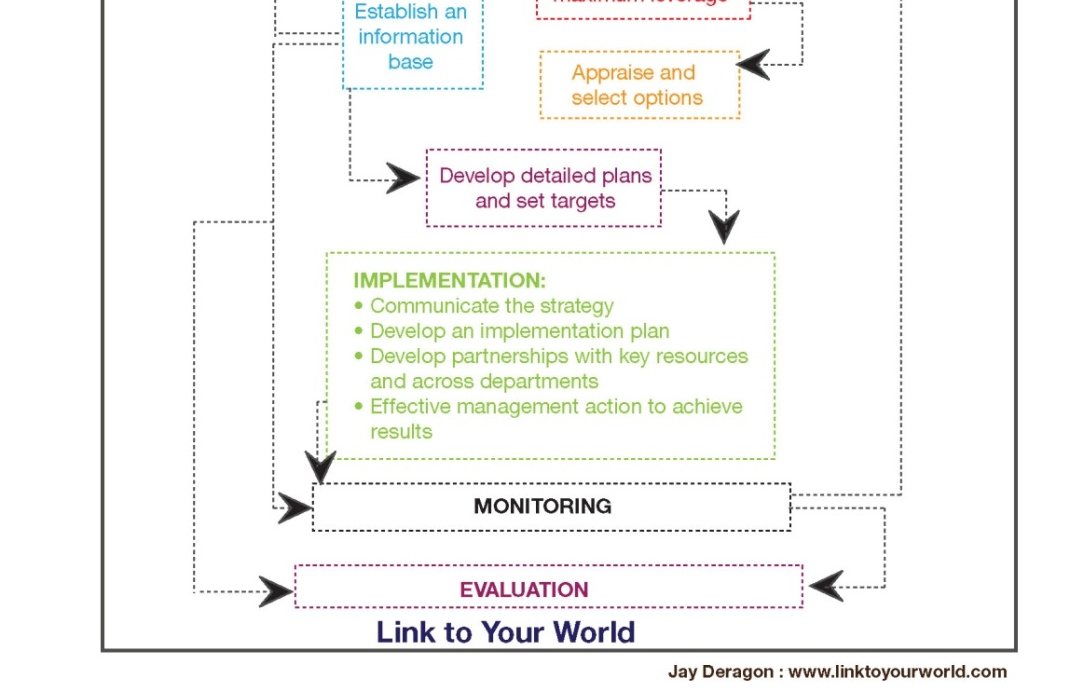
Strategies followed by actions can be measured to verify intent and whether the actions are fulfilling their stated purposes. Situational reactions to the growth of the medium will only end in wasted time, energy and expense that do not deliver on business purposes.
Examining of strengths, weaknesses, opportunities and threats for any organization is the starting point. The end may actually point to an expansion of business purpose in the ways it serves the customer and entire markets.
References
Lukas, Adriana. (2008, February 27). Media Influencer. Retrieved May 14, 2008, from http://www.mediainfluencer.net/2008/02/vrm-one-pager Peters, Tom. (2008, May 9). Sorting Out Causes and Effects. Retrieved May 14, 2008, from http://www.tompeters.com/entries.php?note=010389.php Stewart, Devin. (2008, May 8). Blogger’s Publishing Responsibility: Speech at The Korea Society. Retrieved May 10, 2008, from http://ethicalbloggerproject.blogspot.com/
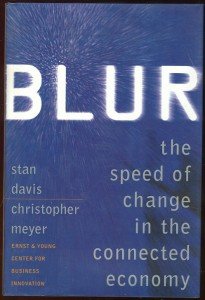
Conclusion
A Business Week article states: In a new book,
Here Comes Everybody, author and academic Clay Shirky argues the future is here; it is time to get on with it
For many companies, adoption of social tools remains the domain of one department (often
marketing or advertising) rather than a goal of the enterprise at large. The book does give
tantalizing glimpses of the challenges and
changes ahead, along with an analysis of the ongoing tension between commercial and
noncommercial .
For most companies, and for many of the
world’s citizens, such anarchy is unthinkable. In the book’s final pages Shirky does not shy away from asking whether the vast changes created by the emergence of new socially connected tools are—on balance—good or bad. He is a self-confessed optimist, but also a pragmatist, arguing that the rise of groups of which the majority might not approve is not just a by-product of the tools; it’s the product, too.
Shirky calls for readers to acknowledge the new reality and look to the future. “The important questions aren’t about whether these tools will spread or reshape society but rather how they do so.” His book is a compendium of smartly analyzed, real-world examples of just that, and it provides a good foundation for those looking to get a handle on the new ways of the world.
So the Big Question is How?
Notice Shirky's emphasis is on how things will change, not whether they will change. Now Shirky and others such as Doc Searls, Seth Godin and a host of thought leaders all agree that the emergence of a social world fueled by technology will change everything for businesses and individual alike. The issue is what further changes will be fueled by the initial changes we are witnessing today.
The question is – What is the fuel that drives creativity? The social tools of today are fueling creative forces against traditional business models, processes and individual mindsets. By simply asking the How question against the basic understanding of the current dynamics, one finds the answers that in turn fuel further creativity.
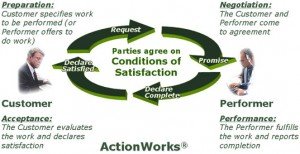
The cycle of asking “how” is similar to a child asking “Why?” The question of how is a fundamental question driven by curiosity? Curiosity leads to discovery that begets learning.
The emergence of social technologies is helping us all rediscover “how” to learn all over again. We can learn “how” things will change together and collectively find Socialutions for many of today’s perplexing problems, and that is a good thing!
An Interactive Revolution? Businesses are designed for interaction. They interact with
markets, people, other businesses
and the world as a marketplace.
Traditionally the methods of
interaction have followed with
“best practices, competitor
strategies and the mantra of the
moment.” Today the process of
interaction is being revolutionized.
McKinsey Quarterly reports: The next revolution in interactions.
1. As more 21st-century companies come to specialize in core activities and outsource the rest, they have greater need for workers who can interact with other companies, their customers, and their suppliers.
2. Thus, the traditional organization, where a few top managers coordinate the pyramid below them, is being upended.
3. Raising the productivity of employees whose jobs cannot be automated is the next great performance challenge—and the stakes are high.
4. Companies that get it right will build complex talent-based competitive advantages that competitors will not be able to duplicate easily—if at all.
McKinsey & Company, known for its excellence in management consulting, is now proclaiming the disruptive nature of the social web, designing services, and writing entire publications devoted to the subject matter. Do you think the issues created by the social web have gone mainstream?
Link to Your World has developed Socialutions to facilitate corporate
adaptation to the systemic and consistent evolution of the digital space. The fundamental and systemic nature of the emerging changes before us lead to the need for Socialutions as t he new management philosophy, which will spawn new practices for those willing and eager to adapt and lead.
References
ActionWorks Image. Retrieved May 21, 2008, from http://www.actiontech.com/products/
Blur Image. Retrieved May 22, 2008, from
http://www.leadershipnow.com/leadershop/7533-4.html Business Week. (2008, March 21). Real World 2.0. Retrieved May 22, 2008, from
http://www.businessweek.com/innovate/content/mar2008/id20080321_8257
86_page_2.htm
The McKinsey Quarterly. (2008). The Next Revolution in Interactions.
Retrieved May 21, 2008, from
http://www.mckinseyquarterly.com/The_next_revolution_in_interactions_16
90_abstract#registerNow
About the Authors
Scott Allen
Scott Allen is Co-Founder and Managing Partner of Link to Your World, LLC
http://www.linktoyourworld.com a full-service company that helps organizations transform virtual relationships into real business. He is a technology teacher, consultant, and speaker on social media and social networking.
Mr. Allen is co-author of The Virtual Handshake: Opening Doors and Closing Deals Online and a contributing author and editor of numerous books on the topic of social networking and social media. Mr. Allen is the Entrepreneurs Guide for About.com, a subsidiary of The New York Times Company and one of the top ten content websites in the world. He is monthly columnist and a contributing expert at Work.com. In addition, he blogs at The Virtual Handshake.com at http://www.thevirtualhanshake.com.
Jay T. Deragon
Jay Deragon is Co-Founder and Managing Partner of Link to Your World, LLC
http://www.linktoyourworld.com as well as co-founder of various social networks including Link to Wall Street at http://www.linktowallstreet.com. In addition, he founded Wireless Factors, http://ww.wirelessfactors.com that serves the networking needs of the global Wireless Communications Community.
Mr. Deragon is considered one of the premier entrepreneurial thought leaders and strategists in the dynamic social media space and the emerging industry of social networks. His blogs –http://www.relationship-economy.com and http://www.socialutions.com serve as reference points for the emerging industry of social networks. He has had a successful career as a serial entrepreneur—founding, operating, and selling numerous businesses, including XS Voice, a mobile application company.
Margaret G. Orem
Margaret Orem is Co-Founder and Managing Partner of Link to Your World, LLC http://www.linktoyourworld.com and Founder and CEO of Execsolution, Inc. http://www.execsolution.com. In addition to serving as a Board Member of the International Debate Education Association-US
http://www.idebate.org, she is co-founder of various social networks including Link to Wall Street at http://www.linktowallstreet.com and Link to New York at http://www.linktonewyork.com
Ms. Orem is a serial entrepreneur with CEO operational experience. With a foundation in government, public, private, and non-profit entities, she has expertise in both restructuring and building new and existing enterprises. Her blog is found at http://www.whatsthebuzzabout.com.
Carter F. Smith
Carter Smith is Managing Partner of Link to Your World, LLC
http://www.linktoyourworld.com and Founder of Link to Your Education at http://www.www.linktoyoureducation.com.
Mr. Smith is an educator, trainer, strategic networks, and facilitator with a background in government, non-profit, and for-profit organizations. He is an Adjunct Professor at Austin Peay State University, and Mountain State University, and as a S.T.A.R. Instructor for the Federal Law Enforcement Training Center, part of the U. S. Department of Homeland Security. In addition, he is a founding board member of the Tennessee Gang Investigators Association, http://www.tn-gia.org and Square One Ranch http://www.squareone ranch.org. He blogs at
http://carterfsmith.blogspot.com.
Link to Your World
Link to Your World, LLC is a full-service company that helps organizations transform virtual relationships into real business through leveraging social media. We are the foremost collaborative association of professionals specializing in social media and innovative technology. Our Managing Partners are among the foremost thought leaders in the systemic shifts of the emerging social media space and collectively shaping its future.
We focus on providing the best in class services in the following areas: Strategic Consulting, Education & Training, Technology, Planning, Implementation and Integration, Social Media and Network Development, Marketing and Business Development, and Research.
Our projects include developing strategic action plans and executionable support for content development and differential, channel distribution by market segments served, video and audio production, integrated advertising for multimedia content, partnership development, and strategic alliances. We enable our clients to maximize the opportunities of the networked world quickly and securely.
Link to Your World supports Project VRM (Vendor Relationship Management), which is a development effort at the Berkman Center for Internet and Society at Harvard University led by Doc Searls, a fellow with the Center, and Co-Author of The Cluetrain Manifesto: The End of Business as Usual.
Link to Your World corporate web si














